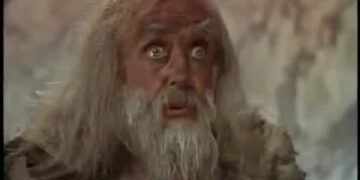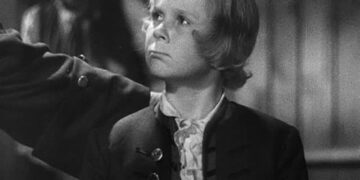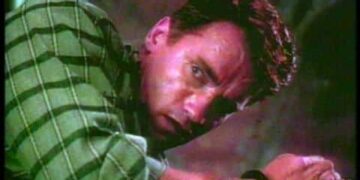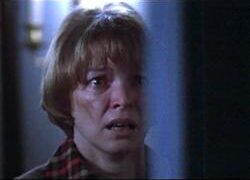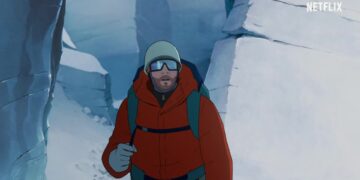The year was 1998, and the silver screen flickered with the resurgence of a legend, cloaked not only in mystery but in an aesthetic that would captivate audiences and fashion enthusiasts alike. “The Mask of Zorro,” directed by Martin Campbell, became more than just a film; it was a sartorial showcase set against the backdrop of California’s fight for independence. The characters, etched in the annals of cinema, were draped in costumes that spoke volumes of their personas, a visual feast of textures, colors, and styles that blended the historical with the dramatic.
From the first whip-cracking scene to the last heroic gallop, the film introduced us to a palette of characters, each uniquely styled, reflecting their roles in the narrative. The rugged charm of Alejandro Murrieta contrasted the polished villainy of Don Rafael Montero, while the supporting cast’s wardrobe provided a subtle yet rich tapestry of the times. It was not merely a film; it was a fashion statement, a period piece that influenced wardrobes and whispered of rebellion, romance, and the undying spirit of adventure.
As a fashion blogger and movie buff, I naturally gravitated towards the intricate details of the film’s costume design. The commitment of the filmmakers to authenticity and character development through clothing fascinated me, prompting a deep dive into the wardrobe of “The Mask of Zorro.” So, sharpen your swords and adjust your capes, as we embark on an analysis and style breakdown of this cinematic gem’s aesthetic.
Character Analysis and Style Breakdown: An Overview
Before we dissect the threads and fabrics that compose the visage of “The Mask of Zorro,” it’s imperative to recognize the narrative’s influence on the wardrobe. A character analysis is not merely about the cut of a coat or the drape of a dress; it’s about understanding the personas that inhabit these garments. The costumes were crafted not just to adorn but to tell a story, to highlight a character’s journey from the humble to the heroic, from the treacherous to the tragic.
The costumes designers, led by the talented Graciela Mazón, didn’t just dress the cast; they wove a visual narrative. Each stitch carried the weight of a character’s past and the foreshadowing of their future. The Mask of Zorro isn’t just a tale of swashbuckling sword fights; it is a tale of identity, legacy, and transformation, all mirrored in the characters’ evolving styles.
My approach to this analysis will be one of a detective of design, unearthing the secrets within seams and the whispers within weaves. We will explore the iconic looks of the main characters, uncovering the symbolic significance of their attire and how these elements can inspire our own fashion choices. Every fold of fabric and choice of color in “The Mask of Zorro” serves a purpose, and together, we’ll decode the sartorial symbols of this cinematic masterpiece.
José María de Tavira as Young Alejandro Murrieta
– The Embodiment of Hope and Rebellion: José María de Tavira’s portrayal of Young Alejandro Murrieta presents us with the raw canvas upon which the Zorro legend would be painted. His look encapsulates the essence of a hopeful rebel, a young man with dreams larger than life and a heart fierce with the flames of vengeance and justice. As we first encounter Alejandro, his attire is simplistic, practical, and unassuming—a reflection of his humble beginnings.
– Earth Tones and Rough Textures: Alejandro’s costume predominantly features earth tones—browns, beiges, and muted greens—colors that root him to the land and to the people he represents. The rough textures of his clothing symbolize the hardships he has endured, while also providing the durability needed for his rugged lifestyle. His outfit is devoid of any ostentatious details, highlighting his status as a man of the people.
– The Transformation through Attire: As Alejandro transitions from a bandit to a burgeoning hero under the tutelage of the original Zorro, his attire evolves. We witness a subtle shift towards a more structured and refined look, though the earthy palette remains, signifying his unchanging connection to his origins. This metamorphosis in his wardrobe is a telltale sign of his character development—a journey from rough to refined, yet never losing the core of who he is.
Detailing the Key Elements of Alejandro Murrieta’s Outfit
– The Bandit’s Bandana: Alejandro’s bandana is more than a mere accessory; it’s a symbol of his outlaw status. Wrapped around his neck or covering his face during a heist, it serves as a versatile tool and a visual emblem of his defiance against Spanish rule.
– The Roughspun Shirt: His shirt, likely made of a coarse cotton or linen blend, is practical and breathable. It’s the kind of garment that can endure the harsh California sun and the strains of a skirmish. The loose fit allows for freedom of movement—an essential for a man constantly on the go.
– The Durable Trousers: Alejandro’s trousers are equally rugged, likely made from a sturdy twill or canvas material. They are cut to allow ease of movement for horseback riding and sword fighting, with a fit that is utilitarian rather than fashion-forward.
In Alejandro’s wardrobe, every item serves a purpose, combining to create a look that is emblematic of his character’s journey. His clothing is not just a costume; it is an armor that reflects his struggles, his resilience, and his unwavering spirit.
Diego Sieres as Young Joaquín Murrieta
– The Brother’s Resemblance: Diego Sieres’s Young Joaquín Murrieta mirrors his brother Alejandro in many ways, not least in their choice of attire. The brothers share a familial resemblance not only in features but also in their clothing, reinforcing their bond and shared experiences.
– The Subtle Differences: Despite the similarities, there are subtle differences in Joaquín’s outfit. Perhaps a slightly different shade or a variation in the cut of his vest, these nuances hint at the brothers’ individual paths and personalities, even as their fates remain intertwined.
– The Narrative Told Through Clothing: Joaquín’s style tells a narrative of a young man in the shadow of his brother, yet with his own story to tell. His clothing is a touchstone for his character’s brief but impactful presence in the film, setting the stage for Alejandro’s transformation into Zorro.
Emiliano Guerra as Boy Crying
– The Innocence of Youth: Emiliano Guerra’s character, the Boy Crying, is a fleeting but poignant figure in the film. His attire is simple, almost nondescript, reflecting the innocence and vulnerability of youth during tumultuous times.
– The Subdued Palette: The Boy’s clothing is subdued in color, hinting at his background and the somber reality of his circumstances. The simplicity of his outfit—a plain shirt, worn pants, and scuffed shoes—speaks volumes about the life of a child in a world overshadowed by conflict.
– The Symbolism of Attire: Though the Boy Crying is a minor character, his style serves as a silent testament to the era’s struggles and the impact of the story’s events on the lives of the innocent. His clothing is a canvas on which the tale of the common people is painted, a visual narrative of loss and hope.
Yolanda Orizaga as Woman Crying
– The Mourning Mother: Yolanda Orizaga’s character, the Woman Crying, is a representation of the collective sorrow of a nation. Her attire is that of a mourner—a shawl draped over her shoulders, a dress darkened by grief, and the subdued shimmer of tears on her cheeks.
– The Details of Despair: The fabrics of her dress are likely to be heavy, reflecting the weight of her sadness. The cut is modest, the colors dark, a visual echo of the mourning process in the 19th century. Her style is defined by the cultural and emotional context of her character.
– The Universal Language of Loss: The Woman’s outfit, while specific to her character, speaks the universal language of loss. Her attire is not only a personal expression of grief but also a broader symbol of the tragedies that unfold throughout the film. Through her style, we glimpse the historical significance of mourning attire and its role in the visual storytelling of “The Mask of Zorro.”
Paco Morayta as The Undertaker
– The Grave Attire: Paco Morayta’s character, the Undertaker, is clothed in the somber garb befitting his profession. His suit is dark, tailored to a grim perfection, and accented with the subtle sheen of a man accustomed to the finality of death.
– The Accessories of the Afterlife: His accessories—a top hat, a pocket watch chain, and perhaps a pair of gloves—are the tools of his trade, each item chosen for its functionality and its association with the rituals of the departed.
– The Stylistic Significance: The Undertaker’s wardrobe is not just a costume; it is a critical component of the film’s atmosphere, contributing to the visual lexicon of life and death that permeates the story. His style is a reflection of his role within the narrative, a character draped in the drapery of mortality.
William Marquez as Fray Felipe
– The Habit of Holiness: William Marquez’s portrayal of Fray Felipe is swathed in the traditional habit of his religious order. The robe is a symbol of his faith and dedication, its simplicity a stark contrast to the opulence of the film’s antagonists.
– The Fabric of Faith: The monk’s attire is likely to be of a rough, undyed wool, the texture speaking to the vow of poverty and the commitment to a life of service. The habit is unadorned, save for the rope belt that cinches at the waist, a nod to the monastic tradition.
– The Costume’s Commentary: Fray Felipe’s clothing is more than mere fabric; it is a commentary on the film’s themes of power and piety, wealth and humility. His style is a visual sermon, preaching the values of the character and the virtues he embodies.
Stuart Wilson as Don Rafael Montero
– The Elegance of Evil: Stuart Wilson’s Don Rafael Montero is the epitome of the well-heeled villain, his attire dripping with the elegance of evil. His wardrobe is a stark departure from the earthy tones of the heroes, instead favoring rich fabrics, elaborate details, and an air of superiority.
– The Opulence of Oppression: Don Rafael’s costumes are lavish, with velvet jackets, silk cravats, and the glint of gold buttons. Each piece is meticulously chosen to project power and prestige, the opulence serving as a visual representation of his oppressive rule.
– The Tyrant’s Tailoring: The precision of the villain’s tailoring is a reflection of his character—controlled, calculating, and without a thread out of place. His style is not just a display of wealth; it is an armor of arrogance, a wardrobe woven with the threads of tyranny.
Styling Tips for Different Occasions Inspired by ‘The Mask of Zorro (1998)’
– The Swashbuckling Soiree: For an event that calls for a dash of daring, draw inspiration from Alejandro’s transformation. A structured jacket in earth tones paired with a crisp white shirt and well-fitted trousers can strike the perfect balance between rugged and refined.
– The Villainous Venture: Channel your inner Don Rafael Montero for a luxurious touch. Opt for rich, dark fabrics and incorporate velvet or silk. Accessorize with a statement piece, like an ornate pocket watch, to emulate the villain’s opulence.
– The Mourning Meet-up: When dressing for a somber occasion, take cues from the Woman Crying. Choose dark, heavy fabrics and simple, modest cuts. A draped shawl or scarf can add an element of historical homage to your ensemble.
How to Get the ‘The Mask of Zorro (1998)’ Look: Summary of Outfits and Where to Buy
– The Hero’s Ensemble: To emulate Alejandro’s look, focus on earth-toned pieces with a hint of structure. Retailers like Zara or Mango offer jackets and trousers that can be adapted to achieve this aesthetic. Add a bandana or a wide-brimmed hat from a specialty store like Goorin Bros. to complete the outfit.
– The Villain’s Getup: Don Rafael’s luxurious style can be replicated with pieces from high-end brands like Brooks Brothers or Ralph Lauren. Look for velvet blazers, silk ties, and tailored trousers. Accent the look with gold cufflinks or a vintage timepiece from a luxury retailer or antique shop.
– The Mourner’s Attire: For a look inspired by the Woman Crying, visit stores like COS or Uniqlo for simple, dark dresses with clean lines. Accessorize with a woolen shawl or a pashmina from a department store like Nordstrom to add depth to your outfit.
Conclusion
As we sheathe our swords and let down the curtain on our sartorial exploration of “The Mask of Zorro,” it’s clear that the film’s wardrobe is as much a character as the actors themselves. Each costume tells a story, each fabric holds a message, and every outfit is a testament to the art of cinematic fashion. The styles we’ve dissected are not mere historical replicas; they are wearable narratives, stitched with the spirit of a bygone era yet timeless in their appeal.
We’ve journeyed through the aesthetic of heroes and villains, of mourners and monks, and in doing so, we’ve uncovered the essence of a film that marries the spectacle of cinema with the intricacies of fashion. Whether you choose to dress like José María de Tavira’s Alejandro or draw inspiration from Stuart Wilson’s Don Rafael Montero, remember that clothing is more than just attire—it’s an expression of character and an extension of story.
Share your unique style tips in the comments and revisit us for the latest updates on fashion advice and exclusive deals!


